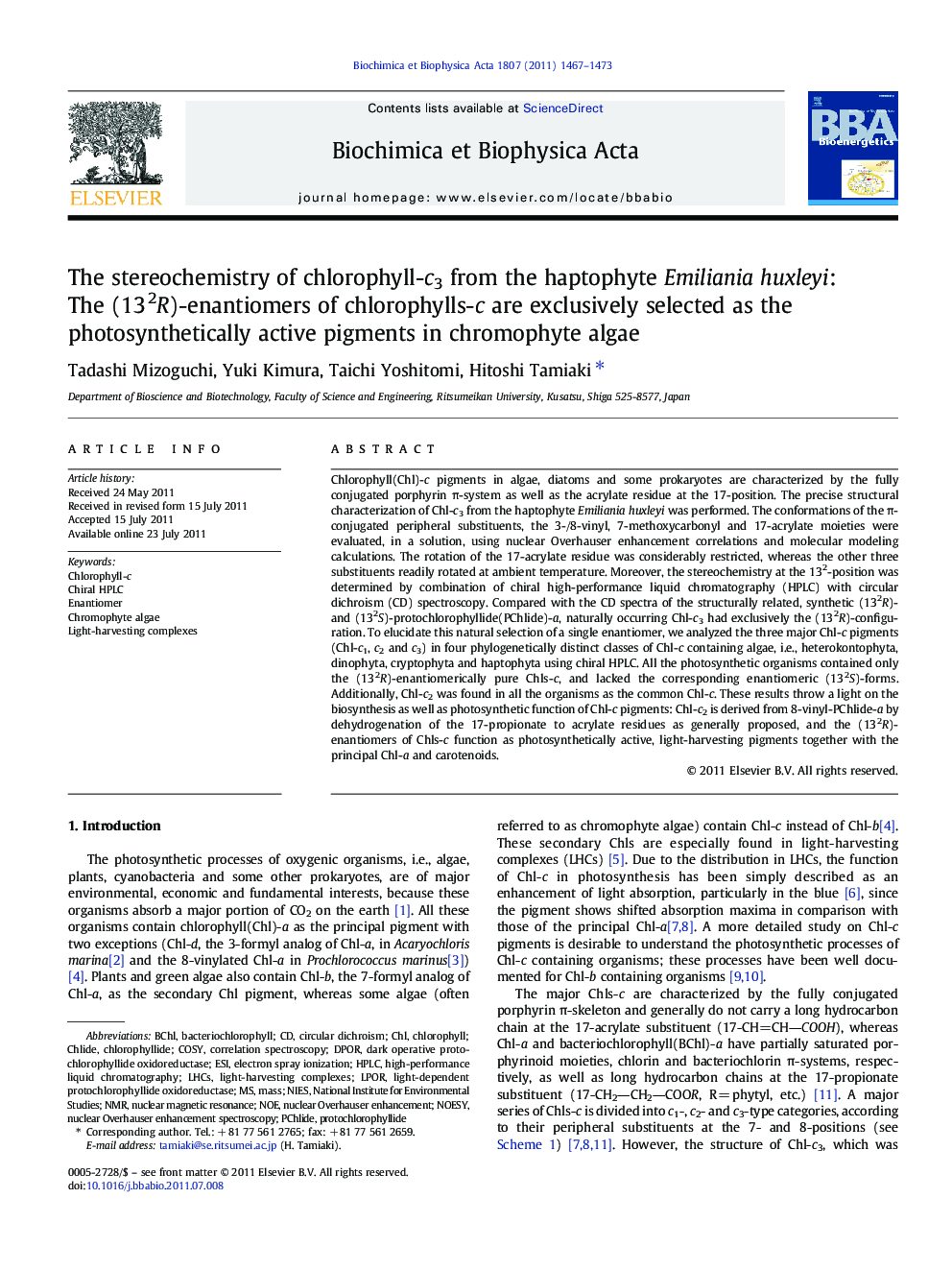| Article ID | Journal | Published Year | Pages | File Type |
|---|---|---|---|---|
| 1942614 | Biochimica et Biophysica Acta (BBA) - Bioenergetics | 2011 | 7 Pages |
Chlorophyll(Chl)-c pigments in algae, diatoms and some prokaryotes are characterized by the fully conjugated porphyrin π-system as well as the acrylate residue at the 17-position. The precise structural characterization of Chl-c3 from the haptophyte Emiliania huxleyi was performed. The conformations of the π-conjugated peripheral substituents, the 3-/8-vinyl, 7-methoxycarbonyl and 17-acrylate moieties were evaluated, in a solution, using nuclear Overhauser enhancement correlations and molecular modeling calculations. The rotation of the 17-acrylate residue was considerably restricted, whereas the other three substituents readily rotated at ambient temperature. Moreover, the stereochemistry at the 132-position was determined by combination of chiral high-performance liquid chromatography (HPLC) with circular dichroism (CD) spectroscopy. Compared with the CD spectra of the structurally related, synthetic (132R)- and (132S)-protochlorophyllide(PChlide)-a, naturally occurring Chl-c3 had exclusively the (132R)-configuration. To elucidate this natural selection of a single enantiomer, we analyzed the three major Chl-c pigments (Chl-c1, c2 and c3) in four phylogenetically distinct classes of Chl-c containing algae, i.e., heterokontophyta, dinophyta, cryptophyta and haptophyta using chiral HPLC. All the photosynthetic organisms contained only the (132R)-enantiomerically pure Chls-c, and lacked the corresponding enantiomeric (132S)-forms. Additionally, Chl-c2 was found in all the organisms as the common Chl-c. These results throw a light on the biosynthesis as well as photosynthetic function of Chl-c pigments: Chl-c2 is derived from 8-vinyl-PChlide-a by dehydrogenation of the 17-propionate to acrylate residues as generally proposed, and the (132R)-enantiomers of Chls-c function as photosynthetically active, light-harvesting pigments together with the principal Chl-a and carotenoids.
► The stereochemistry of chlorophyll(Chl)-c3 from a haptophyte was characterized. ► Chiral HPLC and CD spectra showed natural Chl-c3 to be exclusively (132R)-enantiomer. ► Four phylogenetically distinct classes of algae containing Chls-c were also examined. ► All the photosynthetic organisms contained only (132R)-enantiomerically pure Chls-c.
